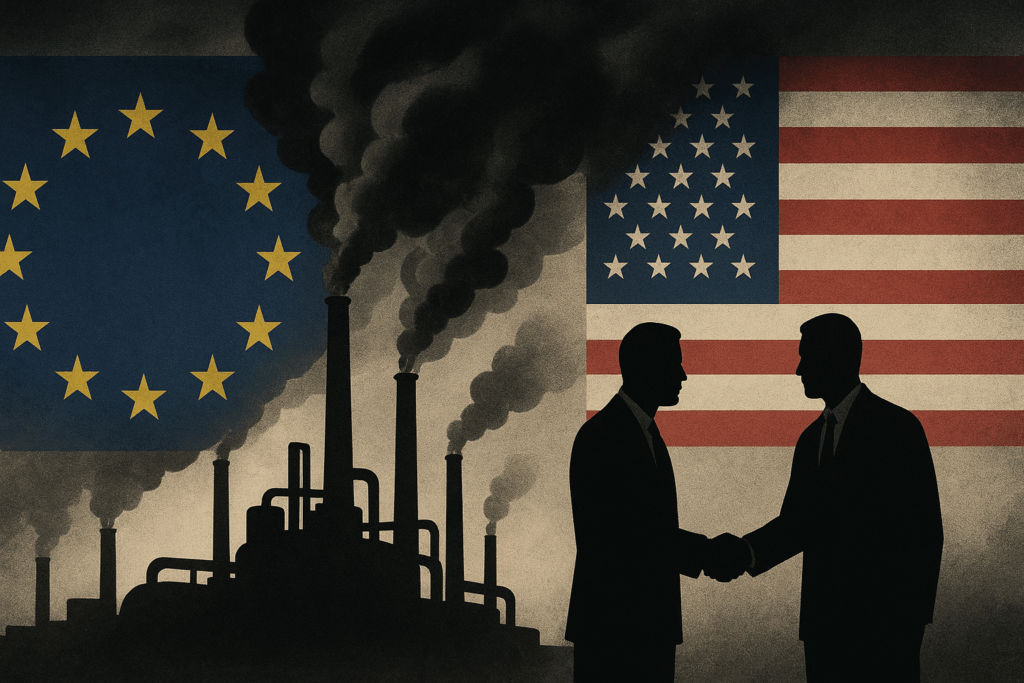On July 29, 2013 Thomas J. Herrmann of the Federal Railroad Administration (FRA) wrote a letter to Jack Gerard, president and CEO of the American Petroleum Institute (API). The letter was in response to the oil train disaster that occurred earlier that month in Lac-Mégantic, Quebec, which killed 47 people and reduced the downtown to a vacant lot (and it remains so over four years later).
Herrmann was writing to Gerard because the oil tank cars hauled by trains are actually owned or leased by members of the American Petroleum Institute, not by rail companies.
Among the several concerns detailed in Herrmann’s letter about oil train risks was the possibility that oil companies were “overloading” the tank cars, but because the oil industry didn’t weigh the cars to check, it was difficult to know if cars were being overloaded.
FRA noted that overloaded tank cars are typically identified when they go over a weigh-in-motion scale at a railroad’s classification yard. However, crude oil is typically moved in unit trains, which haul a single commodity, and the cars in a unit train do not typically pass over these scales.
Herrmann also noted at the time that there had been “product releases” through the top valves on oil tank cars, indicating that the tank cars were overfilled.
Herrmann’s letter suggests that, shortly after the disaster in Lac-Mégantic, there was evidence of the oil industry overloading tank cars. The industry had incentive to do so: The more oil in each tank car, the more profit. Longer, heavier trains are more profitable for the oil industry.
Would the industry risk accidents just to make more profit? The oil train involved in the Lac-Mégantic disaster was recently revealed to be almost 50 percent heavier than regulations said it should have been.
Weighing the Evidence
The cause of the June 2016 oil train derailment and fire in Mosier, Oregon, was found to be sheared bolts used to hold the rails in place. As rail consultant and former industry official Steven Ditmeyer told DeSmog at the time, “This sounds like a very similar circumstance to what was happening in the early 1990s with overloaded double stack container cars.”
According to Ditmeyer, that issue was resolved when the rail industry started weighing containers before loading them on double-stacked cars, an easy fix for avoiding the problem of overloading.
Except, of course, as noted in Herrmann’s letter, the oil industry doesn’t weigh oil tank cars.
And as previously noted on DeSmog, the LA Times reported in 2015 that investigators at Canada’s Transportation Safety Board suspected that oil trains were causing unusual track damage.
“Petroleum crude oil unit trains transporting heavily loaded tank cars will tend to impart higher than usual forces to the track infrastructure during their operation,” the safety board said in a report. “These higher forces expose any weaknesses that may be present in the track structure, making the track more susceptible to failure.”
After oil trains kept derailing, Doug Finnson, president of the Teamsters Rail Conference of Canada, expressed concerns about the forces the trains were exerting on the tracks to CBC News in March 2015, saying, “These trains are likely too long, too heavy, and going too fast for the track conditions in place.”
All of this came in the years after the Federal Railroad Administration expressed its concerns about overloaded oil tank cars in that 2013 letter to API.
The American Petroleum Institute Responds
The Federal Railroad Administration required DeSmog to file a Freedom of Information Act request to obtain a copy of API’s response to Herrmann’s letter, which we have finally received. This is the entirety of the response.
The oil and gas industry’s largest lobbying group avoided addressing a single question from regulators, instead punting to its members. Whether any of those oil companies responded to the Federal Railroad Administration’s concerns remains unclear.
This ability to essentially ignore regulators’ safety concerns speaks to the danger of transporting oil by rail in North America.
Furthermore, all of this played out before the current anti-regulation agenda of the Trump administration. As we have noted at DeSmog before, the new approach known as “performance based regulation,” which is championed by current FRA administrator nominee Ronald Batory, would move toward a system of industry self-regulation.
Based on API’s response, however, industry self-regulation doesn’t appear to be anything new.
Main image: American Petroleum Institute president and CEO Jack Gerard. Credit: U.S. Department of Energy, public domain
Subscribe to our newsletter
Stay up to date with DeSmog news and alerts







